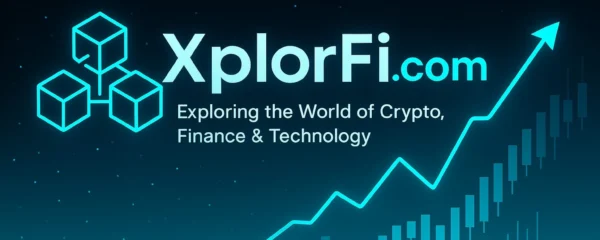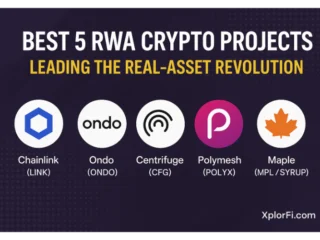5 Solo Bitcoin Miners Earn Over $350K Each in 2025

The Unlikely Triumphs of Solo Bitcoin Miners in 2025
Bitcoin miners has long been a domain dominated by large-scale operations, where specialized hardware and vast computational power are the norm. However, 2025 has witnessed a series of unexpected events that have challenged this perception. Five solo miners, operating outside of traditional mining pools, have managed to mine blocks on their own, each earning rewards exceeding $350,000. These rare successes highlight the unpredictable and democratic nature of Bitcoin, where even small-scale participants can occasionally outshine corporate giants.
Understanding Bitcoin Mining
Bitcoin mining is the process of validating transactions and securing the network by solving complex cryptographic puzzles. This task is typically carried out by large mining farms equipped with advanced, specialized hardware. In contrast, solo mining involves an individual attempting to discover a block independently, which is an extremely rare feat due to the high level of competition and difficulty.
In 2025, the mining difficulty has reached an all-time high. For a solo miner with standard hardware, the probability of success is comparable to winning a major lottery. With the Bitcoin network’s total hash rate consistently increasing, the chances of a small-scale miner with computing power of a few terahashes per second (TH/s) successfully mining a block are exceptionally low.
For instance, a miner with a 100-TH/s machine, such as a high-end Antminer S19, has less than a 0.0001% chance of solving a block on any given day. As a result, it could take a solo miner months or even years to earn a single block reward.
Notable Solo Wins in 2025
Several notable solo mining achievements have occurred throughout 2025:
- Block 883,181 (Feb. 10, 2025): An anonymous miner successfully mined this block, receiving a reward of 3.125 BTC valued at over $300,000. The block processed 3,071 transactions.
- Block 903,883 (July 4, 2025): A solo miner with 2.3 petahashes per second (PH/s) mined this block, earning 3.173 BTC valued at approximately $349,028. The likelihood of such a success was about one in 2,800 per day.
- Block 907,283 (July 26, 2025): Another independent miner using Solo CKPool successfully mined this block, receiving 3.125 BTC valued at $372,773. The block included 4,038 transactions and generated $3,436 in fees.
- Block 910,440 (Aug. 17, 2025): A solo miner using Solo CKPool mined this block, collecting 3.125 BTC and about 0.012 BTC in transaction fees, totaling around $373,000. The block had 4,913 transactions.
- Block 913,632 (Sept. 8, 2025): An individual miner successfully mined this block, earning 3.14 BTC valued at $348,111. The block contained 1,956 transactions.
These successes demonstrate how, despite mining being dominated by large-scale operations, individual miners can still overcome the odds and achieve significant rewards. Together, these wins showcase Bitcoin’s unique combination of unpredictability, decentralization, and opportunity.
The Role of Block Rewards and Transaction Fees
Bitcoin block rewards halve roughly every four years, reducing miner income but often preceding price rallies. In 2024, the reward dropped to 3.125 BTC per block. These events highlight how mining shapes Bitcoin’s monetary policy and scarcity over time.
In 2025, the combination of high onchain activity and substantial transaction fees contributed to the success of solo miners. Additionally, Bitcoin’s price has remained consistently around or above $100,000 since the start of the year, making the rewards highly valuable. What made these earnings stand out was that the solo miners were able to win the rewards with their small-scale equipment.
The Impact of Hash Rate on Mining
Hash rate is a key factor in Bitcoin mining, as it measures the total computing power used to solve the network’s cryptographic puzzles. A higher hash rate strengthens the network’s security, making it harder for malicious actors to tamper with transactions. For miners, the hash rate determines their probability of successfully mining a block.
Large mining pools combine hash rates to improve their chances of consistent rewards, while solo miners with lower hash rates have much smaller odds. The Bitcoin network adjusts its mining difficulty every 2,016 blocks to maintain an average block time of about 10 minutes, regardless of the total computing power.
According to CoinWarz, the hash rate on the Bitcoin network increased from 702.8319 exahashes per second (EH/s) on Jan. 1, 2025, to 1,285.6948 EH/s on Sept. 20, 2025. This indicates how the mining difficulty on the Bitcoin network consistently increases.
Tools and Platforms Enabling Solo Success
Platforms like Solo CKPool provide the necessary technical framework for independent miners to connect directly to the Bitcoin network. Unlike large mining pools that distribute rewards among numerous participants, these platforms allow a solo miner to receive the entire payout if they successfully solve a block.
This approach supports decentralization while offering stable connections and reliable software support. However, the journey is challenging. Solo miners face significant expenses, including energy costs and the purchase and maintenance of ASIC hardware, all while competing against a global network with immense computational power. The chances of success are very slim, requiring considerable patience, as many miners may never solve a block.
Nevertheless, the potential for substantial rewards, particularly during times of high transaction fees, makes the effort worthwhile for some. These platforms create opportunities for independent miners, enabling remarkable victories against formidable odds.
Solo successes in Bitcoin mining are a reminder of the network’s open and permissionless structure. The vision of Satoshi Nakamoto, the creator of Bitcoin, was of a decentralized network where anyone with computational power could mine and compete for block rewards. These wins suggest that successful Bitcoin mining isn’t the monopoly of mining pools and that even small, independent miners can achieve success.
Which one are you watching, Xplorianz? Drop your take on the most underrated pick this week in the comments!. Slide into our inbox Facebook, or tag us on X . Stay sharp, stay weird, and keep Xploring
Disclaimer:
This article is for informational and entertainment purposes only and does not constitute financial advice. Always do your own research (DYOR) before making any investment decisions, your money, your call. Crypto’s wild, so stay sharp out there!








No Comments